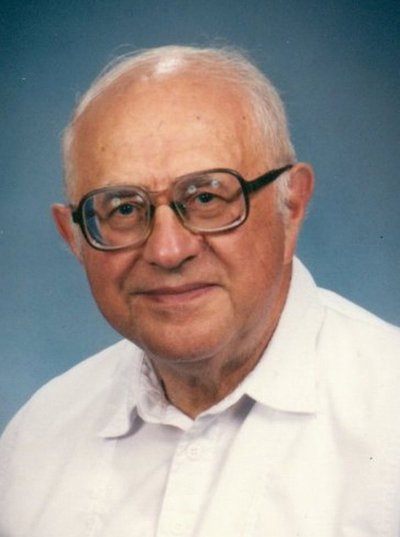June 3, 2010
Endowed lectureship named in honor of tireless public health advocate, Peter Breysse
When the Department of Environmental and Occupational Health Sciences was formed 40 years ago, Peter Breysse was one of its founding faculty members. He was instrumental to the development of the department, and in particular, the industrial hygiene program.
In memory of Breysse, who died on May 10 at the age of 87, his family and the department have established an endowed lectureship to honor and recognize his dedication to worker and public health.
A journalist at The Seattle Times dubbed Breysse the “Ralph Nader of the Northwest” in a 1986 story about Breysse’s persistence and bullheaded determination to protect the public from exposures industries deemed harmless.
“He wasn’t always very popular. But he was tough about holding his ground in what he believed in,” says Jack Hatlen, an associate professor emeritus who was in the department when Breysse was hired in 1957.
Breysse tested mercury vapor exposures in dental offices and measured noise levels around the Seattle-Tacoma airport when the port embarked on a major expansion plan and residents of the area filed lawsuits. He evaluated air quality in the Metro sewer system when its tunnels were first excavated. He studied heaters linked to carbon monoxide camper deaths, reporting a need for safety regulation changes to the Consumer Protection Agency and the Department of Social and Health Services.
“Peter had a crusade to detect formaldehyde in homes and mobile homes throughout the Northwest in the ‘70s and 80s,” remembers Lee Monteith, a senior lecturer emeritus in the department.
Formaldehyde is a colorless, strong-smelling chemical used in building materials and to produce many household products. Breysse tested hundreds of mobile homes in Washington, Oregon and Idaho and determined formaldehyde exposure came from deteriorating particle-board insulation or insulation sprayed under flooring or in cheap rug materials. Exposure to the chemical may cause watery eyes, burning sensations in the eyes, nose, or throat, coughing, and skin irritation, and long-term exposure has been linked to cancer.
According to his son Patrick, a professor in industrial hygiene at the Johns Hopkins Bloomberg School of Public Health, Breysse’s groundbreaking research on formaldehyde helped to establish the field of indoor air pollution. “He was passionate about the need to protect people from harmful effects of chemicals in the homes, schools, and workplace,” says Patrick Breysse.
He cared deeply about public health, says Professor Jane Koenig, who has been in the department for more than 30 years. She remembers him regularly visiting the offices of fellow faculty members, asking them each time, “What are you doing to bring exposures down?”
Breysse chaired the American Conference of Governmental Industrial Hygienists, served on the its Physical Agents Committee and the American Board of Industrial Hygiene, and worked persistently to advance the profession. He recommended setting exposures levels to workplace chemicals, even when he was criticized by others. He wanted to avoid adverse health effects and better protect workers who are exposed day after day.
“Peter was way ahead of his time in recognizing certain preventative measures that people should take,” says Hatlen.
Over a 40-year tenure in the profession, Breysse mentored and influenced many students to enter the field, and can be credited with populating the ranks of industrial hygienists throughout the country.
An endowed lectureship in Breysse’s name will enable the department to recruit national and international speakers to share new ideas and inspire faculty, staff and students to continue his legacy to make a difference.
Donations for the lectureship can be made online here or by contacting Tamara Burdic at 206-221-6343 or tamarab@u.washington.edu.
See a video of Peter Breysse interviewed by Eric Swenson on Aug. 3, 2007, as part of the School of Public Health History Project here.

